This was published 4 years ago
Airline liveries: The origins of Qantas' Flying Kangaroo and nine other iconic plane designs
By Paul Chai
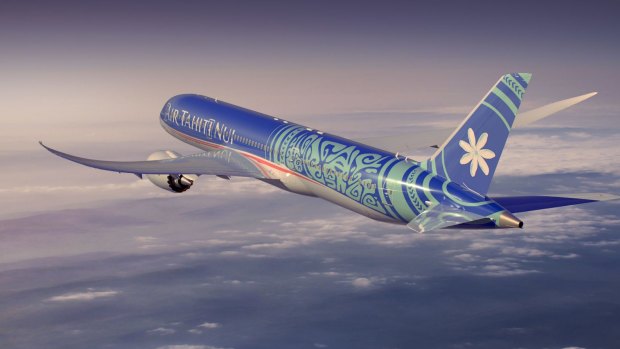
Tropical Polynesian livery: Air Tahiti Nui.
AIR TAHITI NUI
A good national carrier has livery that evokes the destination and Air Tahiti Nui's recent livery overhaul features the trademark tiare flower, a tattoo pattern representing a story of Tahiti and its people, and the beautiful blues of the Tahitian sea. Celebrating 20 years last year with a batch of new 787-9 Dreamliners, the airline also won best livery at the TheDesignAir awards for its tropical take on plane design.
HAWAIIAN AIRLINES
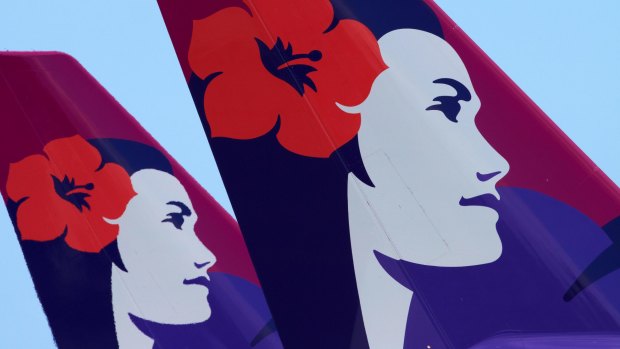
"Flower of the sky": Hawaiian Airlines. Credit: Alamy
Another tail that transports you to the tropics, and another floral design, Hawaiian Airlines' mascot Pualani – or the "flower of the sky" – has been around since the late '70s. Pualani is meant to embody the hospitality, pride and spirit of America's island outpost. In 2001 Pualani went from a vague profile to having much clearer facial features and a 2017 revamp saw the addition of the rising sun and richer purple colour to represent her regal status as a grand dame of the skies.
AIR SEYCHELLES
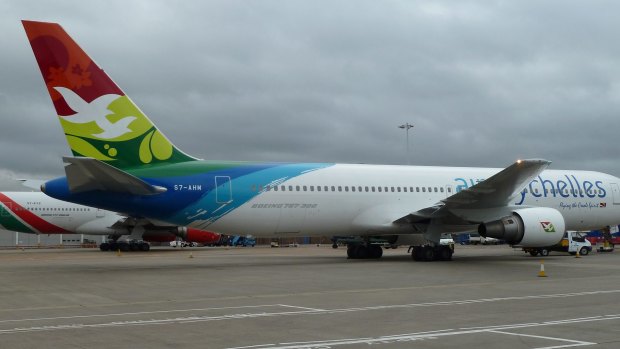
From Pacific islands to an archipelago just east of Africa, Air Seychelles has chosen the local flora and fauna to grace its tail with a pair of fairy terns, striking white birds that lay their eggs in the forks of trees of the island chain without using a nest. The birds (and birds are a very popular choice for airlines for obvious reasons) are often seen travelling in mating pairs, and the planes have a background of colours that are supposed to invoke the island's forests and flowers.
QANTAS AIRWAYS
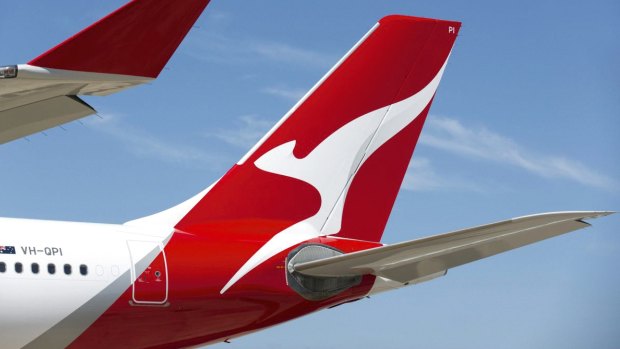
The current design introduced in 2016.
The national carrier's "flying kangaroo" has made a land-bound macropod synonymous with taking flight since the kangaroo, which was originally given wings, first appeared in the 1940s. Originally adapted from the Australian one-penny coin, the kangaroo has had slight design tweaks in 2007 and 2016 with the introduction of the Dreamliner but it remains a potent symbol to travelling Aussies everywhere. "The iconic Qantas kangaroo logo represents our proud history and is a symbol of aviation innovation around the world," says Vanessa Hudson, Qantas group chief customer officer. "It's also become a symbol of home to Australians, inspiring feelings of comfort and connections to loved ones."
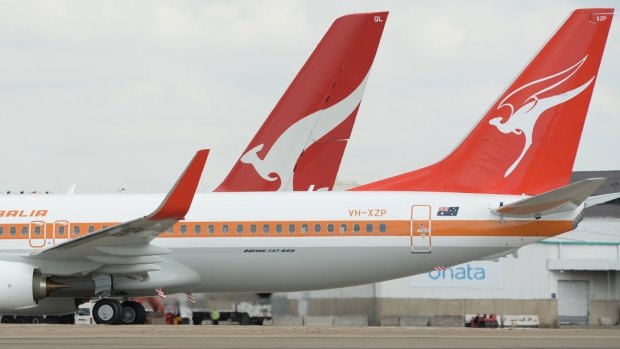
SCOOT
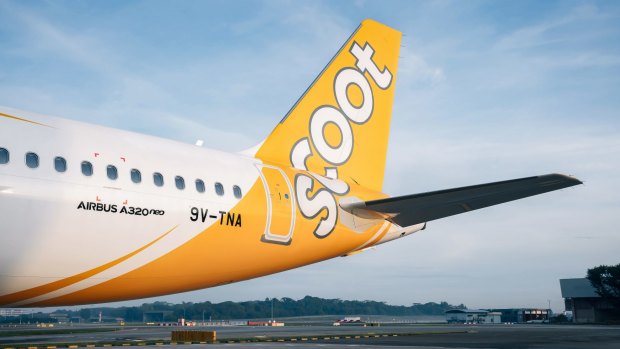
.
Everything about the Singaporean low-cost carrier is meant to inspire you to take to the skies. From the name, to the tagline "Get Outta Here", to the livery itself. The "t" in Scoot is outside of the circle to symbolise that the letter itself has got out of there and is at an angle to represent the quirkiness of the airline. As for the colour, it was originally meant to be green but was changed by Campbell Wilson, Scoot's founding CEO. "Yellow was bright and happy, which was what I wanted the company culture to exhibit, and, to me, represented vacation sunshine which was pertinent to a leisure-focused airline," Wilson says. "I recall arriving into Sydney on our inaugural flight, sitting in the cockpit and hearing air traffic control say: 'Scooter zero zero two cleared for landing, welcome to Sydney you big yellow banana'. One of those 'only in Australia' moments."
TIGERAIR AUSTRALIA
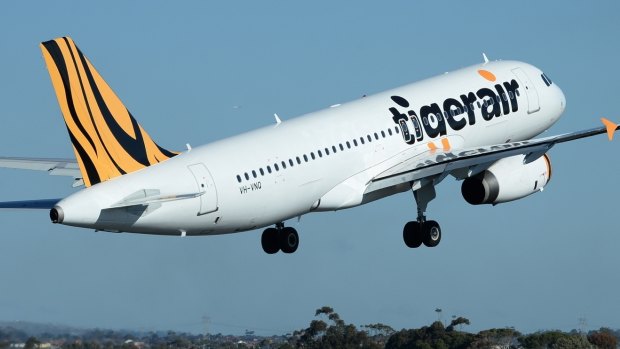
Tigerair began in Singapore as the low-cost short haul sibling to Scoot, it's now Tigerair Australia, a fully owned subsidiary of Virgin Australia Holdings. The leaping big cat livery took to Australian skies in 2007 and was rebranded in 2013 where it now flies wrapped in an overhauled logo. While the flying tiger may seem to have been replaced by a cheery font, it lives on in clever design. While the livery stays true to representation of an actual tiger with the striped tail, the aircraft is actually winking, courtesy of the differently coloured dots over the "i"s.
ETIHAD AIRWAYS
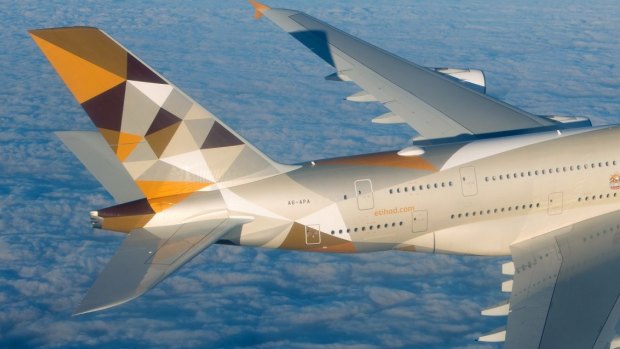
Desert colours and the geometric shapes seen in modern Abu Dhabi skyscrapers all brought together in a pattern reminiscent of ancient Emerati designs, the UAE carrier's livery is as thoughtful as it is beautiful. This take on the Etihad logo and livery was first introduced after the airline's 10th anniversary in 2013 and seeks to reflect the modern and ancient strands of the emirate itself – and the design also seeks to give the feeling of the shifting desert dunes that surround the airline's home base.
SWISS INTERNATIONAL AIR LINES
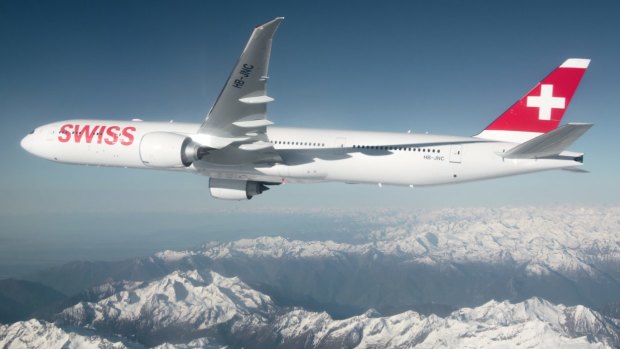
Like the flying kangaroo the bold white cross on a red background is a classic. Blessed with a national flag that is one of the most recognisable in the world, the national carrier would have been mad not to cover itself in this well-known symbol. The Swiss flag is one of only two sovereign-state flags that is square instead of rectangular (the other is the Vatican) and the simple bold SWISS on the side of the white plane leaves you in no doubt who you are flying with.
AERO MEXICO
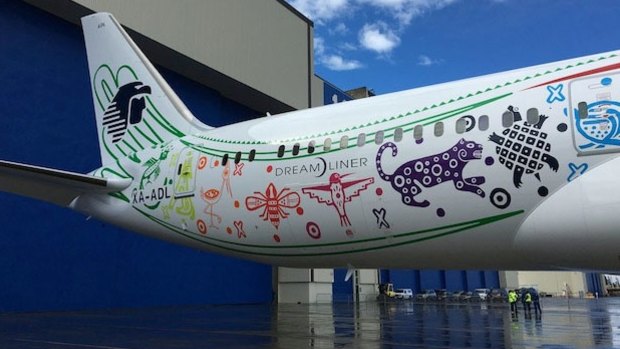
The "eagle knight" or eagle warrior is a symbol of Aztec culture and a strong part of Mexican tradition. The Aero Mexico eagle warrior is courageous and fearless and has had a few different iterations over the years, starting life as a more lifelike sketch, but now he is a sleek profile with strong horizontal lines that represent flight and movement. In 2016 the airline was yet another to celebrate the arrival of a Dreamliner with a special livery showing a feathered serpent but the eagle warrior was still there on the tail looking imposing.
CHINA SOUTHERN AIRLINES
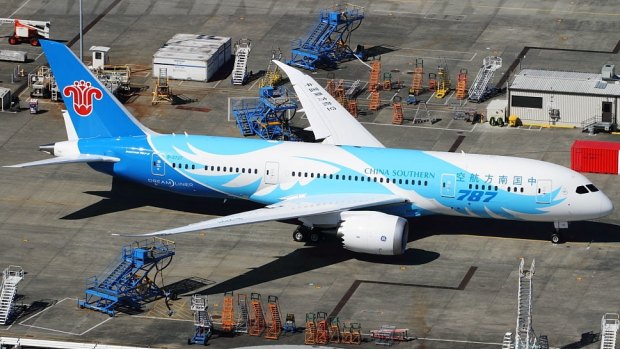
Credit: Photo
Based out of the Chinese city of Guangzhou, China Southern is the country's largest airline. The bold red logo on the tail of its fleet represents the kapok flower that is a key symbol of Chinese culture. The kapok blooms a brilliant red around Guangzhou, the tree is used to make cotton and is believed to have healing medicinal powers – and it is known to grow high towards sunlight symbolising the planes taking to the sky. The planes exterior is a series of light blues and a new Dreamliner has wings incorporated into the design.
See also: What the F? Cathay spells its own name wrong on plane
See also: United Airlines' unveils its first new design in a decade
Sign up for the Traveller newsletter
The latest travel news, tips and inspiration delivered to your inbox. Sign up now.